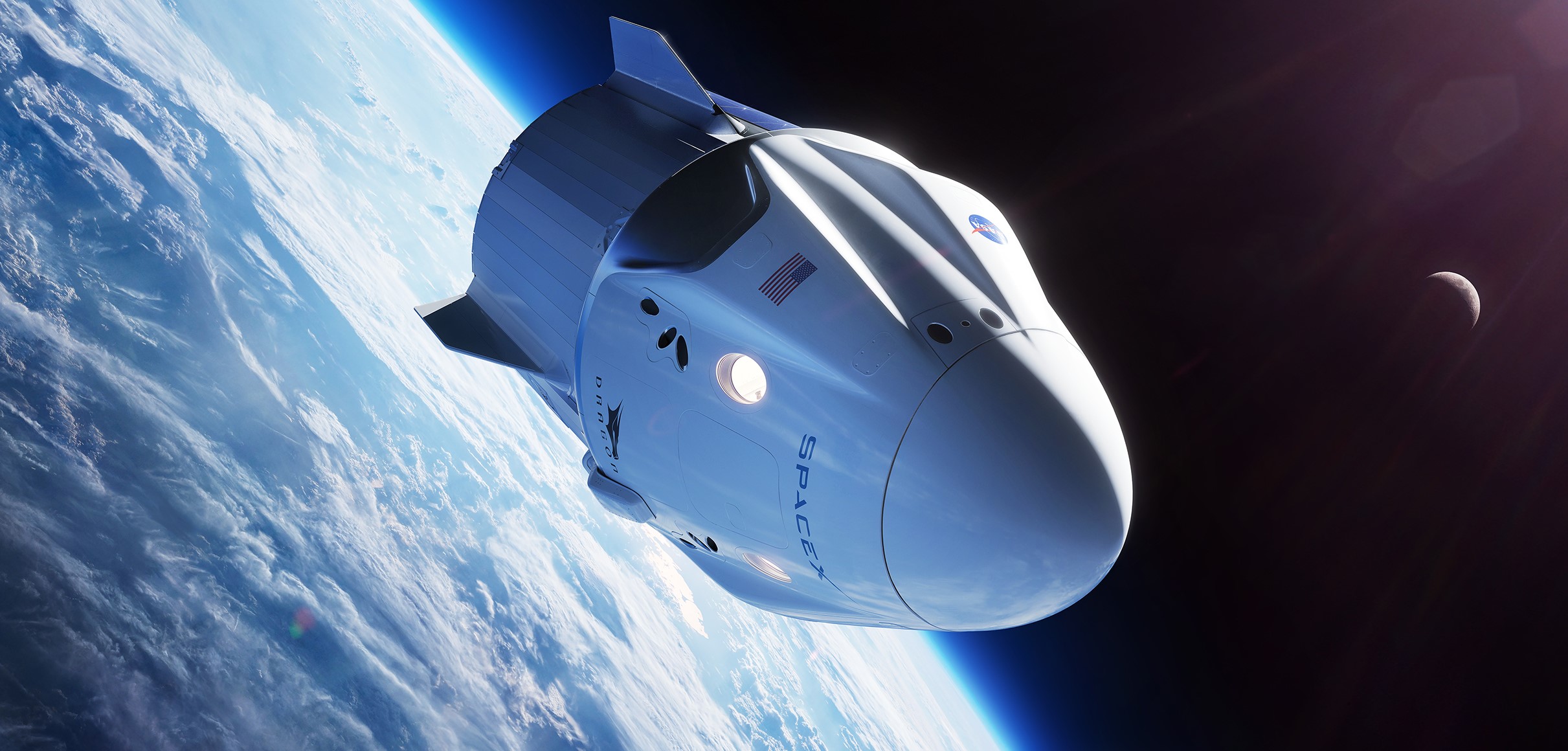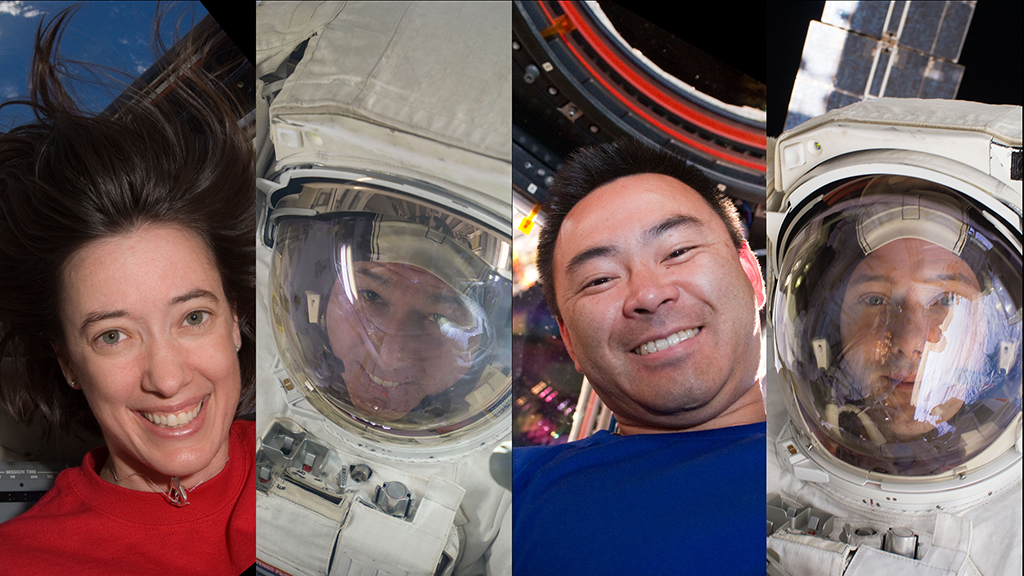

News
NASA picks diverse astronaut roster for SpaceX Crew Dragon 2021 mission
With Demo-2, the final certification test flight of SpaceX’s Crew Dragon capsule nearing completion, NASA is looking ahead to future operational crewed missions. NASA previously announced that following NASA astronauts Bob Behnken and Doug Hurley’s successful return from the International Space Station (ISS) in early August, three NASA astronauts and one Japanese astronaut of the Japan Aerospace Exploration Agency (JAXA) would soon be following on their own flight to the Space Station, SpaceX’s first operational crewed flight known as “Crew-1.” This mission is tentatively scheduled to occur no earlier than Fall of 2020.
Just days ahead of Demo-2’s anticipated conclusion, NASA, along with its international partners, has announced the roster and date of SpaceX’s third operational crewed mission referred to as “Crew-2.” Like Crew-1, the Crew-2 mission will feature a diverse international roster of four astronauts. Onboard will be veteran flyers, NASA astronauts Megan McArthur and Shane Kimbrough, along with JAXA astronaut Akihiko Hoshide, and European Space Agency (ESA) astronaut Thomas Pesquet. Should everything go as planned with Crew-1, Crew Dragon’s third operational crewed flight, Crew-2, is scheduled for liftoff no earlier than the Spring of 2021.

NASA keeps it in the family
One Crew-2 participant stands out from the rest, NASA astronaut Megan McArthur. She is a veteran NASA flyer having previously flown aboard the STS-125 space shuttle Atlantis mission in May of 2009. Although Crew-2 will be her second time to orbit, it will be her first visit to the ISS. During her first mission, she spent her time in orbit serving as a Mission Specialist servicing NASA’s Hubble Space Telescope. In 2019 she was appointed as NASA’s Deputy Chief of the Astronaut Office ISS Operations Branch, a role in which she provides support to astronauts in training and aboard the ISS.
Not only is McArthur an experienced space flyer and well-versed in mission support, but she is also married to NASA astronaut Bob Behnken. While Behnken served as Joint Operations Commander for Crew Dragon’s Demo-2 mission, McArthur was back at SpaceX headquarters in Hawthorne, CA training for her own Crew Dragon mission to the ISS.
https://twitter.com/Astro_Megan/status/1288203342250901504
McArthur was joined by her NASA and international partners Crew-2 crewmates to train at the SpaceX facility utilizing the Crew Dragon simulator. According to an interview with ESA astronaut Thomas Pesquet, the entire crew has been at various training facilities located in Texas and California presumably for weeks familiarizing themselves with Crew Dragon and ISS specific training, just as Behnken and Hurley did prior to their Demo-2 departure.
Looks like I'll be the first European to ever ride a Dragon into space! Training has already started at SpaceX's futuristic facilities. Stay tuned for more updates… and wait, how do you install the "launch" app on these giant tablet-screens? 😅😉🙃 pic.twitter.com/wD7zOf7EAl
— Thomas Pesquet (@Thom_astro) July 28, 2020
Commercial and international crew will bring the ISS to full capacity
NASA astronaut Shane Kimbrough will fly for his third trip to orbit after having previously flown aboard space shuttle Endeavour for STS-126 and aboard a Russian Soyuz spacecraft for Expedition 49/50 in 2016. Japanese astronaut Akihiko Hoshide will be the second JAXA astronaut to fly aboard SpaceX’s Crew Dragon following Soichi Noguchi on Crew-1. ESA astronaut Thomas Pesquet will be the first European to fly aboard the Crew Dragon. It will be his second mission to orbit following a six-month-long stay aboard the ISS in 2016.
The 2021 Crew-2 mission will increase the number of ISS occupants from six to a full complement of seven. Crew-2’s four Dragon Riders will be joined by a three-member crew set to launch aboard a Russian Soyuz spacecraft. The increase of long-duration crew members will allow NASA to “effectively double the amount of science that can be conducted in space,” as stated in an official NASA Commercial Crew blog post. The Crew-2 astronauts are expected to stay aboard the orbiting outpost for six months.
News
Tesla cleared in Canada EV rebate investigation
Tesla has been cleared in an investigation into the company’s staggering number of EV rebate claims in Canada in January.

Canadian officials have cleared Tesla following an investigation into a large number of claims submitted to the country’s electric vehicle (EV) rebates earlier this year.
Transport Canada has ruled that there was no evidence of fraud after Tesla submitted 8,653 EV rebate claims for the country’s Incentives for Zero-Emission Vehicles (iZEV) program, as detailed in a report on Friday from The Globe and Mail. Despite the huge number of claims, Canadian authorities have found that the figure represented vehicles that had been delivered prior to the submission deadline for the program.
According to Transport Minister Chrystia Freeland, the claims “were determined to legitimately represent cars sold before January 12,” which was the final day for OEMs to submit these claims before the government suspended the program.
Upon initial reporting of the Tesla claims submitted in January, it was estimated that they were valued at around $43 million. In March, Freeland and Transport Canada opened the investigation into Tesla, noting that they would be freezing the rebate payments until the claims were found to be valid.
READ MORE ON ELECTRIC VEHICLES: EVs getting cleaner more quickly than expected in Europe: study
Huw Williams, Canadian Automobile Dealers Association Public Affairs Director, accepted the results of the investigation, while also questioning how Tesla knew to submit the claims that weekend, just before the program ran out.
“I think there’s a larger question as to how Tesla knew to run those through on that weekend,” Williams said. “It doesn’t appear to me that we have an investigation into any communication between Transport Canada and Tesla, between officials who may have shared information inappropriately.”
Tesla sales have been down in Canada for the first half of this year, amidst turmoil between the country and the Trump administration’s tariffs. Although Elon Musk has since stepped back from his role with the administration, a number of companies and officials in Canada were calling for a boycott of Tesla’s vehicles earlier this year, due in part to his association with Trump.
News
Tesla Semis to get 18 new Megachargers at this PepsiCo plant
PepsiCo is set to add more Tesla Semi Megachargers, this time at a facility in North Carolina.

Tesla partner PepsiCo is set to build new Semi charging stations at one of its manufacturing sites, as revealed in new permitting plans shared this week.
On Friday, Tesla charging station scout MarcoRP shared plans on X for 18 Semi Megacharging stalls at PepsiCo’s facility in Charlotte, North Carolina, coming as the latest update plans for the company’s increasingly electrified fleet. The stalls are set to be built side by side, along with three Tesla Megapack grid-scale battery systems.
The plans also note the faster charging speeds for the chargers, which can charge the Class 8 Semi at speeds of up to 1MW. Tesla says that the speed can charge the Semi back to roughly 70 percent in around 30 minutes.
You can see the site plans for the PepsiCo North Carolina Megacharger below.

Credit: PepsiCo (via MarcoRPi1 on X)

Credit: PepsiCo (via MarcoRPi1 on X)
READ MORE ON THE TESLA SEMI: Tesla to build Semi Megacharger station in Southern California
PepsiCo’s Tesla Semi fleet, other Megachargers, and initial tests and deliveries
PepsiCo was the first external customer to take delivery of Tesla’s Semis back in 2023, starting with just an initial order of 15. Since then, the company has continued to expand the fleet, recently taking delivery of an additional 50 units in California. The PepsiCo fleet was up to around 86 units as of last year, according to statements from Semi Senior Manager Dan Priestley.
Additionally, the company has similar Megachargers at its facilities in Modesto, Sacramento, and Fresno, California, and Tesla also submitted plans for approval to build 12 new Megacharging stalls in Los Angeles County.
Over the past couple of years, Tesla has also been delivering the electric Class 8 units to a number of other companies for pilot programs, and Priestley shared some results from PepsiCo’s initial Semi tests last year. Notably, the executive spoke with a handful of PepsiCo workers who said they really liked the Semi and wouldn’t plan on going back to diesel trucks.
The company is also nearing completion of a higher-volume Semi plant at its Gigafactory in Nevada, which is expected to eventually have an annual production capacity of 50,000 Semi units.
Tesla executive teases plan to further electrify supply chain
News
Tesla sales soar in Norway with new Model Y leading the charge
Tesla recorded a 54% year-over-year jump in new vehicle registrations in June.

Tesla is seeing strong momentum in Norway, with sales of the new Model Y helping the company maintain dominance in one of the world’s most electric vehicle-friendly markets.
Model Y upgrades and consumer preferences
According to the Norwegian Road Federation (OFV), Tesla recorded a 54% year-over-year jump in new vehicle registrations in June. The Model Y led the charge, posting a 115% increase compared to the same period last year. Tesla Norway’s growth was even more notable in May, with sales surging a whopping 213%, as noted in a CNBC report.
Christina Bu, secretary general of the Norwegian EV Association (NEVA), stated that Tesla’s strong market performance was partly due to the updated Model Y, which is really just a good car, period.
“I think it just has to do with the fact that they deliver a car which has quite a lot of value for money and is what Norwegians need. What Norwegians need, a large luggage space, all wheel drive, and a tow hitch, high ground clearance as well. In addition, quite good digital solutions which people have gotten used to, and also a charging network,” she said.
Tesla in Europe
Tesla’s success in Norway is supported by long-standing government incentives for EV adoption, including exemptions from VAT, road toll discounts, and access to bus lanes. Public and home charging infrastructure is also widely available, making the EV ownership experience in the country very convenient.
Tesla’s performance in Europe is still a mixed bag, with markets like Germany and France still seeing declines in recent months. In areas such as Norway, Spain, and Portugal, however, Tesla’s new car registrations are rising. Spain’s sales rose 61% and Portugal’s sales rose 7% last month. This suggests that regional demand may be stabilizing or rebounding in pockets of Europe.
-

 Elon Musk2 weeks ago
Elon Musk2 weeks agoTesla investors will be shocked by Jim Cramer’s latest assessment
-

 Elon Musk2 days ago
Elon Musk2 days agoxAI launches Grok 4 with new $300/month SuperGrok Heavy subscription
-

 Elon Musk4 days ago
Elon Musk4 days agoElon Musk confirms Grok 4 launch on July 9 with livestream event
-

 News1 week ago
News1 week agoTesla Model 3 ranks as the safest new car in Europe for 2025, per Euro NCAP tests
-

 Elon Musk2 weeks ago
Elon Musk2 weeks agoA Tesla just delivered itself to a customer autonomously, Elon Musk confirms
-

 Elon Musk1 week ago
Elon Musk1 week agoxAI’s Memphis data center receives air permit despite community criticism
-

 News2 weeks ago
News2 weeks agoXiaomi CEO congratulates Tesla on first FSD delivery: “We have to continue learning!”
-

 Investor's Corner2 weeks ago
Investor's Corner2 weeks agoTesla gets $475 price target from Benchmark amid initial Robotaxi rollout

















